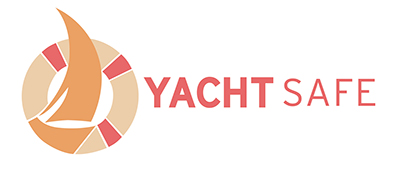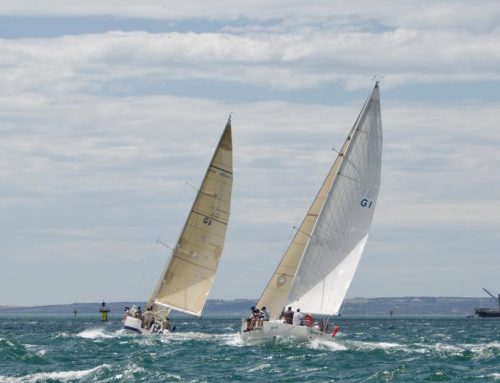Preparing your boat for a Safety Equipment Audit.
What is a Safety Equipment Audit ?
A “Safety Equipment Audit” is an inspection conducted by an accredited National Equipment Auditor (NEA) who represents your Yacht Club, or the race organising authority.
Most Clubs now require a #Safety Equipment Audit be undertaken prior to competing in the club’s race series.
Additionally you may be required to undertake a more stringent Equipment Audit by an Organising Authority holding a regatta or single race, for example the Sydney To Hobart and pretty much all other Ocean races.
Categories range from Off The Beach to Cat 1and everywhere in between.
The Safety Equipment Audit is an independent assessment that the owner has complied with Australian Sailing Special Regulations Parts 1 and 2 and it is valid until the end of June each year.
It is the owner’s responsibility to self-audit prior to each race to ensure compliance, and ensure your crew is safe in an emergency.
The audit does not remove the owner’s ultimate responsibility for safety. The audit also does not assess the boat’s hull structure, stability or integrity.
The compliance requirements are set by Australian Sailing (AS). For some races there may be some additional items needed. These are voiced in the Notice of Race.
An audit generally takes approximately 1-1.5 hours and involves an auditor inspecting all of the elements listed on the audit form, to check that equipment is in place, in serviceable condition and to ensure whether the equipment is compliant.
How can I prepare for an audit?
The first place to start is by reading through the “YA BLUE BOOK” special regulations Ebook Parts (1) and (2) familiarise yourself with what equipment is required to comply with the category you need to be in, ask yourself do I have this, and is it in good serviceable condition, is it IN DATE/ Survey, what do I need to get sorted BEFORE I book an Audit Appointment.
We also have the audit forms on our website to view. Or Click This Link to download the latest Australian Sailing forms, you will also find a lot more useful information here.
You will notice that there are sections on the audit form that the boat owner (you) need to fill out and sign off on prior to the audit. This is so you can make sure you have all the equipment that’s required, and in working order in-time for your audit.
” Please do not book an audit until you are satisfied your boat will comply, if you are unsure, speak to your sailing administrator and they can put you in contact with an “NEAS” auditor to assist prior to your audit, an audit is not the time or place to be unprepared.”
Make sure you understand what all the requirements are. There may be equipment you need to go onboard and check, repair, replace, or purchase prior to the audit and this can take time to do!
When an auditor comes on board, they are going to want to know the following:
- That you have the required equipment
- That the equipment is in service and fully operational
- That you know how to use the equipment
Checklist prior to audit:
The following is VERY IMPORTANT
- Have copies of all your service certificates with you, Eg life jacket service records, epirb sticker and anything that needs a service make sure you have proof of this.
- Have copies of any service certificates for any crew or personal gear kept on the boat, crew personal equipment is also audited and MUST be present on the boat at audit time.
- Medical kits can take weeks to collate, allowing for documentation a pharmacist may need, time to order in items not normally kept in stock. Keep a summary of each kit along with expiry dates, ensure it is visible on the kit; auditors will look closely at this.
- Make sure all the equipment required on the audit form is on the boat for the audit. The auditor needs to see everything on the day in order to pass the boat, remember if it’s in the locker we cannot check it, MAKE sure it’s on the boat, it saves time and assists all parties get through the audit in a timely manner.
- Involve the crew in the audit process. This is a great way to get everyone knowledgeable on the safety equipment on your boat, whilst you the Skipper are responsible, involving your crew is very important, remind them of the importance of the audit and that you will need some of them on board at the time of the audit,.
On the day of the audit:
Make sure you arrive at your boat early, be ready for the auditor, lay out all the equipment that needs to be checked by the auditor, searching for equipment whilst an auditor is on board is not a good look, be organised, be ready, have all your supporting documents ready to be viewed.
This makes it a lot easier and quicker for the auditor to audit your boat.
lot easier and quicker for the auditor to audit your boat.
The auditor needs to view and inspect all equipment on audit day in order to pass your boat.
“Don’t be the Skipper who’s boat does not meet its audit because you or your crew were not prepared,
Please don’t take out your frustrations on the auditor. Auditors are volunteers and in most cases are also your fellow club men and women, they do not set the rules, they are there to independently audit your boat, they are also there to help you get through your audit with the ultimate goal of you and your crew being safer should the need arise that you rely of some or all of your boat’s safety equipment.
If you are confused or unsure about any element of the auditing process, please check out our resources section on the Australian Sailing Resources or see your club captain and sailing administrator for further information, however do this PRIOR to your audit.
A first pass is the best outcome, it shows true seamanship, and that you are committed to your crew and the boat’s safety.
Good Luck with your next audit.
Malcolm Eaton




Leave A Comment